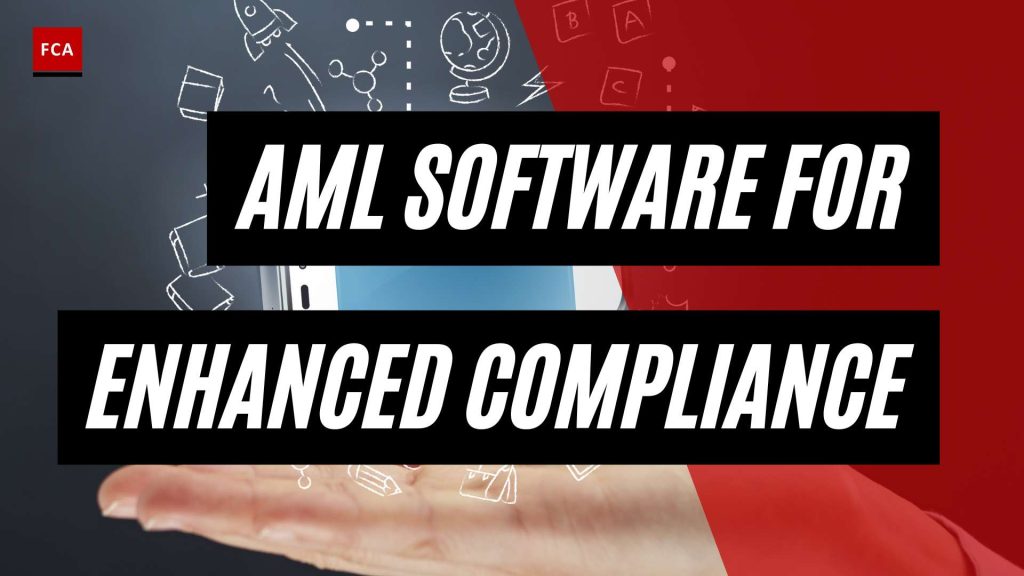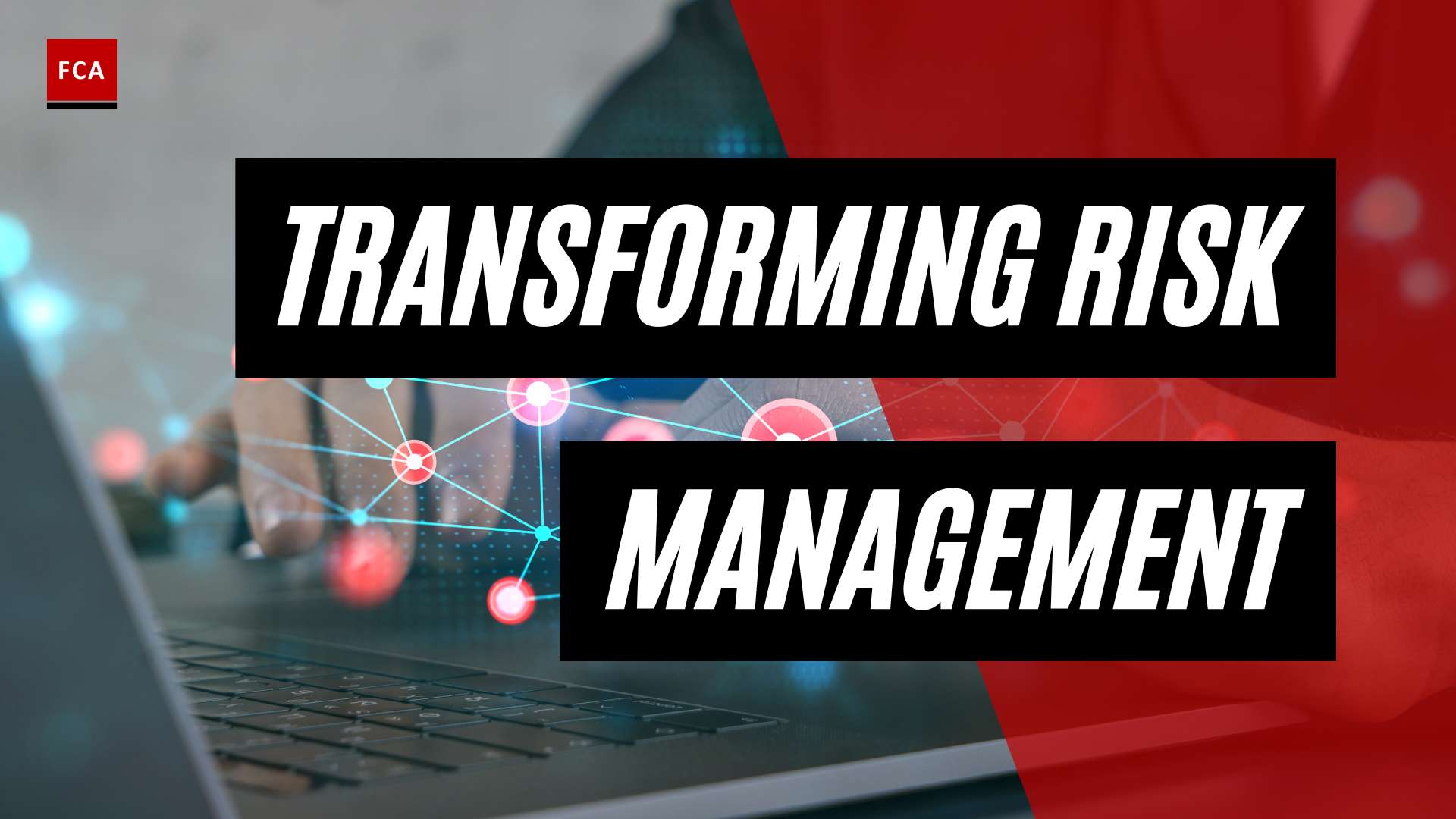AML Training Software: Enhancing Compliance Efforts
The Importance of AML Training
In the ever-evolving landscape of financial crime, organizations are increasingly recognizing the importance of effective anti-money laundering (AML) training. AML training plays a crucial role in educating employees about the risks associated with money laundering and terrorist financing, as well as the regulatory obligations and best practices for prevention. It empowers professionals working in compliance, risk management, anti-money laundering, and anti-financial crime to identify and report suspicious activities, contributing to a robust compliance framework.
By providing AML training for employees, organizations can foster a culture of awareness and accountability. Training sessions cover a range of topics, including the identification of suspicious activities, conducting due diligence, implementing risk assessments, and adhering to regulatory requirements. Employees are equipped with the knowledge and skills necessary to fulfill their roles effectively and contribute to the overall fight against financial crime.
Benefits of AML Training Software
To enhance the effectiveness and efficiency of AML training, organizations are turning to AML training software. This technology-driven solution offers several benefits over traditional training methods, such as AML training videos and AML training webinars.
AML training software provides a cost-effective solution for organizations to ensure their employees receive up-to-date training and comply with the latest AML policies and regulations. By utilizing e-learning and digital tools, training can be delivered remotely, allowing employees to learn at their own pace and eliminating the need for in-person sessions. This flexibility is particularly valuable for organizations with geographically dispersed teams or remote working arrangements.
Additionally, AML training software allows organizations to track and monitor employee progress and performance. This feature ensures that regulatory requirements are met and provides valuable insights into training effectiveness. By identifying areas of improvement, organizations can address knowledge gaps and enhance the overall quality of their AML programs.
Furthermore, AML training software often includes interactive learning tools, such as quizzes, case studies, and simulations. These interactive elements engage employees and reinforce their understanding of AML concepts. By actively participating in the learning process, employees are better equipped to detect and report suspicious activities, ultimately enhancing an organization’s ability to combat financial crime.
In conclusion, AML training software is a valuable tool for organizations seeking to enhance their compliance efforts. By investing in comprehensive training solutions, organizations can strengthen their AML programs, protect their reputation, and mitigate the risks associated with financial crime. Moreover, AML training software enables organizations to customize training content to align with their specific industry requirements and address unique AML challenges, further optimizing the impact of the training program on organizational compliance.
For organizations looking to implement AML training software, it is essential to consider factors such as user interface, automation capabilities, and integration with existing systems. By choosing the right software solution, organizations can ensure that their AML training initiatives are efficient, effective, and tailored to their specific needs.
Features of AML Training Software
AML training software offers a range of features and tools that enhance the effectiveness and efficiency of anti-money laundering training. These features enable organizations to provide comprehensive training programs that address the specific needs of their employees. Here are some key features commonly found in AML training software:
Template-Based Course Creation
To simplify the course creation process, AML training software provides a template-based authoring tool. This tool allows users to create courses with just a click of a button, reducing the time and effort required to develop engaging and informative training materials. By utilizing templates, organizations can ensure consistency in content delivery and streamline the course creation process.
Ready-Made Course Library
AML training software offers access to a ready-made course library, providing organizations with an extensive range of pre-developed courses on anti-money laundering topics. With over 1,000 courses available, organizations can efficiently implement training without the need for extensive content development (EdApp). This library allows organizations to select and deploy courses that align with their specific training objectives and regulatory requirements.
| Features |
|---|
| Template-Based Course Creation |
| Ready-Made Course Library |
| Interactive Learning Tools |
Interactive Learning Tools
To enhance the effectiveness of AML training, software platforms incorporate various interactive learning tools. These tools engage learners and reinforce their understanding of key concepts. Examples of interactive learning tools include quizzes, case studies, simulations, and scenario-based activities. By incorporating interactive elements, organizations can create a more engaging and immersive learning experience, increasing knowledge retention and application (Financial Crime Academy).
AML training software offers a comprehensive set of features that cater to the diverse needs of organizations and their employees. From template-based course creation to a ready-made course library and interactive learning tools, these features enable organizations to deliver effective and engaging AML training programs. By leveraging these features, organizations can ensure that employees are well-equipped to identify and prevent money laundering activities, reinforcing their role as the first line of defense against financial crimes.
Types of AML Software Solutions
When it comes to combating money laundering and ensuring compliance, various types of AML software solutions are available. These solutions offer advanced features and technologies to help organizations streamline their anti-money laundering efforts. Let’s explore three key types of AML software solutions: identity verification tools, transaction monitoring software, and risk assessment and management solutions.
Identity Verification Tools
Identity verification tools play a crucial role in the fight against money laundering. These tools enable organizations to verify the identities of their customers and detect any suspicious activity. By accessing authoritative databases and issuing sources across multiple countries, identity verification tools allow businesses to confirm the authenticity of customer information. They can also help protect against identity spoofing through features like selfie comparisons (Persona).
With the ability to verify various documents, such as business registrations and proof of income, identity verification tools provide an essential layer of protection. They offer features like NFC chip verification for passports and two-factor authentication for ownership verification. By utilizing these tools, organizations can enhance their due diligence processes and ensure compliance with anti-money laundering regulations.
Transaction Monitoring Software
Transaction monitoring software is another critical component of effective AML software solutions. This software enables organizations to monitor financial transactions in real-time, allowing them to identify any suspicious patterns or behaviors. By screening transactions against global sanction lists and conducting negative news checks, transaction monitoring software helps organizations identify potential money laundering activities.
Automated transaction monitoring systems can handle large volumes of transactions, improving efficiency and reducing manual effort. These systems use advanced algorithms and machine learning techniques to detect anomalies and flag potentially fraudulent transactions. By implementing transaction monitoring software, organizations can enhance their ability to identify and mitigate money laundering risks.
Risk Assessment and Management Solutions
Risk assessment and management solutions are designed to help organizations assess and manage the risks associated with money laundering. These solutions provide a comprehensive framework for organizations to evaluate their vulnerabilities, implement risk-based controls, and ensure compliance with regulations. By conducting thorough risk assessments, organizations can identify areas of weakness and implement appropriate measures to mitigate money laundering risks.
Risk assessment and management solutions enable organizations to customize their risk frameworks based on their specific industry requirements. They help organizations align their AML efforts with regulatory guidelines and best practices. By implementing these solutions, organizations can enhance their risk management capabilities and strengthen their overall compliance programs.
By leveraging the power of identity verification tools, transaction monitoring software, and risk assessment and management solutions, organizations can significantly enhance their anti-money laundering efforts. These AML software solutions offer advanced features and technologies to detect and prevent money laundering activities. With the continuous evolution of financial crimes, it is essential for organizations to stay updated and utilize these powerful tools to safeguard their operations and maintain compliance.
Considerations for Choosing AML Training Software
When selecting AML training software, there are several important considerations to keep in mind. The software should provide a user-friendly interface, offer automation capabilities, and seamlessly integrate into existing systems.
User Interface and Ease of Use
An intuitive user interface is crucial for effective AML training software. The software should be easy to navigate and understand, allowing employees to access and complete training modules without confusion. A visually appealing and well-organized interface can enhance the learning experience and encourage active participation.
The best AML training software often includes interactive features, such as quizzes, case studies, and simulations, to engage employees and reinforce their understanding of AML concepts. These interactive elements can enhance the learning experience and make the training more effective in preparing staff to detect and report suspicious activities (Financial Crime Academy).
Automation Capabilities
Automation capabilities are essential for streamlining the AML training process. The software should offer features such as automated course assignments, progress tracking, and reminders for upcoming training modules or certification renewals. Automation helps ensure that employees receive the necessary training in a timely manner and minimizes administrative burden on compliance teams.
By automating certain aspects of AML training, companies can save time and resources while maintaining compliance with regulatory requirements. This allows organizations to focus on other critical compliance efforts and risk management activities.
Integration and Setup
AML training software should integrate seamlessly with existing systems and workflows. It should be compatible with learning management systems (LMS) or other platforms commonly used by organizations for training purposes. Integration enables easy deployment of the training software and facilitates centralized management of employee training records.
Additionally, the setup process should be straightforward, with minimal technical requirements. The software provider should offer comprehensive documentation and support to assist with the implementation and configuration of the training software.
By considering the user interface, automation capabilities, and integration options, organizations can choose AML training software that meets their specific needs. It is important to select a software solution that aligns with the organization’s training goals, enhances employee engagement, and simplifies compliance efforts.
For more information about AML compliance training and software, you may find our articles on aml training videos, aml compliance training online, and aml training for employees helpful.
Customization and Adaptability
AML training software offers organizations the flexibility to customize and adapt training programs to meet industry requirements and address unique AML challenges. This customization capability ensures that employees receive training that is tailored to their specific roles and responsibilities, enhancing the overall effectiveness of the program.
Tailoring Training to Industry Requirements
Organizations operating in different industries may have specific AML requirements and risk profiles. AML training software allows companies to customize the training content to align with these industry-specific needs. By incorporating industry-specific scenarios, regulations, and best practices, organizations can ensure that their employees receive relevant and targeted training. This tailored approach enhances employees’ understanding of AML concepts within the context of their industry, enabling them to apply their knowledge effectively in their day-to-day roles. It also helps organizations demonstrate compliance with industry-specific regulations and standards.
Addressing Unique AML Challenges
Every organization faces unique AML challenges based on its size, business model, customer base, and geographical location. AML training software provides the flexibility to address these specific challenges. Companies can customize the training content to focus on areas that are particularly relevant to their operations. For example, organizations in the financial sector might prioritize training on customer due diligence and transaction monitoring, while companies in other industries may emphasize training on identifying red flags related to money laundering activities specific to their sector.
By tailoring the training content to address these unique challenges, organizations can ensure that their employees are equipped with the knowledge and skills necessary to identify and mitigate potential AML risks. This targeted approach helps strengthen the overall AML compliance program, reduces the likelihood of non-compliance, and enhances the organization’s ability to detect and prevent financial crimes.
AML training software not only allows for customization but also provides a range of interactive features to enhance the learning experience. These features may include quizzes, case studies, simulations, and interactive scenarios. By engaging employees through interactive elements, organizations can reinforce their understanding of AML concepts, promote active learning, and increase retention of important information.
By leveraging the customization and adaptability features of AML training software, organizations can ensure that their training programs align with industry requirements and address their unique AML challenges. This tailored approach enhances the effectiveness of the training, promotes a culture of compliance, and empowers employees to play an active role in preventing financial crimes.
The Impact of AML Training Software
Implementing AML training software can have a significant impact on strengthening compliance programs and empowering employees as the first line of defense against financial crime. These software solutions are designed to educate employees at all levels of an organization, from entry-level staff to senior executives, on their responsibilities in preventing money laundering and terrorist financing (Financial Crime Academy). Let’s explore the benefits in more detail.
Strengthening Compliance Programs
Investing in AML training software is crucial for building a strong culture of compliance within organizations. These software solutions provide comprehensive training modules, case studies, quizzes, and assessments to ensure that employees understand the concepts and requirements of AML laws and regulations (Financial Crime Academy). By equipping employees with the knowledge and skills necessary to detect and report suspicious activities, organizations can enhance their overall anti-money laundering program and mitigate the risks associated with financial crimes.
AML training software enables organizations to keep up with the evolving landscape of financial crime. The software can be regularly updated with the latest regulatory changes, industry best practices, and emerging trends. This ensures that employees receive up-to-date training, enabling them to adapt to new challenges and effectively respond to evolving money laundering techniques. By staying ahead of the curve, organizations can better protect themselves and their customers from financial crime.
Empowering Employees as the First Line of Defense
AML training software plays a crucial role in empowering employees to act as the first line of defense against money laundering and other illicit activities. Through interactive learning tools and real-world examples, employees gain a deeper understanding of the red flags and indicators of suspicious transactions. They are equipped with the knowledge and skills to identify potentially fraudulent activities and report them to the appropriate authorities or internal compliance teams.
By fostering a culture of vigilance and responsibility, organizations can create an environment where all employees actively contribute to the prevention of financial crime. When employees feel confident in their ability to recognize and address potential risks, they become valuable assets in safeguarding the organization’s reputation and maintaining regulatory compliance. AML training software helps instill the necessary knowledge and confidence in employees, enabling them to make informed decisions and take appropriate actions when faced with suspicious activities.
In summary, the impact of AML training software is twofold. It strengthens compliance programs by providing comprehensive and up-to-date training, ensuring organizations are equipped to prevent and detect financial crimes. Additionally, it empowers employees to be proactive in identifying and reporting suspicious activities, making them an integral part of the organization’s defense against money laundering and other illicit activities. By leveraging the benefits of AML training software, organizations can enhance their compliance efforts, protect their reputation, and minimize the risks associated with financial crimes.
AML Training Software: A Cost-Effective Solution
In the realm of anti-money laundering (AML) training, organizations are turning to AML training software as a cost-effective solution to ensure their employees receive up-to-date training and comply with the latest AML policies and regulations. This software not only enhances compliance efforts but also strengthens an organization’s overall anti-money laundering program, reducing the risks associated with financial crimes (Financial Crime Academy).
Ensuring Up-to-Date Training
A comprehensive AML training program is essential for organizations to fulfill their obligations under authorities like FATF and OFAC. It helps employees stay informed about the latest regulations and increases awareness about money laundering, fraud, and financial crimes. AML training software plays a crucial role in delivering up-to-date training content that reflects the evolving landscape of financial crimes. Regular updates ensure that employees receive the most current information and are equipped to identify and prevent money laundering activities. By investing in AML training software, organizations can ensure that their employees are continuously educated on the latest trends, regulations, and case studies in the field of AML (Financial Crime Academy).
Tracking and Monitoring Employee Progress
AML training software provides organizations with the ability to track and monitor employee progress and performance. It allows companies to keep a record of completed training modules, track the time spent on each module, and view assessment scores. This feature enables organizations to demonstrate compliance with regulatory requirements and provides insights into areas where additional training may be needed. By monitoring employee progress, organizations can ensure that their staff is actively engaging with the training materials and gaining the necessary knowledge to fulfill their AML responsibilities effectively (Financial Crime Academy).
To ensure comprehensive tracking and monitoring, AML training software often includes interactive features such as quizzes, case studies, and simulations. These features engage employees and reinforce their understanding of AML concepts. Through interactive elements, employees can actively apply their knowledge, test their understanding, and gain practical insights into identifying suspicious activities and reporting them effectively. This iterative learning process helps employees develop the skills required to detect and prevent money laundering activities (Financial Crime Academy).
By utilizing AML training software, organizations can enhance their compliance programs, empower employees as the first line of defense against financial crimes, and significantly reduce the risks associated with money laundering. The cost-effectiveness of these software solutions, combined with their ability to deliver up-to-date training and monitor employee progress, make them an invaluable tool in the fight against financial crimes. As the landscape of financial crimes continues to evolve, AML training software will play a crucial role in keeping employees well-informed and equipped to tackle emerging threats (Financial Crime Academy).
The Future of AML Training Software
As financial crimes evolve and become more complex, the future of AML training software lies in its ability to keep pace with these changes and provide practical insights and real-world examples. By staying up-to-date and relevant, AML training software can effectively equip professionals in compliance, risk management, anti-money laundering, and anti-financial crime with the knowledge and skills needed to combat evolving threats.
Keeping Pace with Evolving Financial Crimes
Money laundering techniques are constantly evolving, making it increasingly challenging for organizations to detect and prevent illicit activities. According to the Financial Action Task Force (FATF), money laundering is becoming more sophisticated with the use of new technologies like virtual currencies and online platforms by money launderers (Sanction Scanner). AML training software must adapt to these changes and provide comprehensive training on emerging risks and fraud patterns.
To effectively combat evolving financial crimes, AML training software should be regularly updated with the latest industry trends, regulations, and case studies. By incorporating real-world examples and practical insights, professionals can gain a deeper understanding of the tactics employed by money launderers and fraudsters. This knowledge equips them with the necessary skills to identify suspicious activities, report them, and implement appropriate preventive measures (Financial Crime Academy).
Practical Insights and Real-World Examples
The future of AML training software lies in its ability to provide practical insights and real-world examples that resonate with professionals in the financial sector. By presenting case studies and scenarios that reflect the challenges faced in their day-to-day work, AML training software can enhance the learning experience and help professionals apply their knowledge effectively.
By showcasing actual instances of money laundering, fraud, and financial crimes, AML training software enables professionals to understand the intricacies of these illicit activities. It highlights red flags, patterns, and indicators that may be indicative of money laundering. This practical approach empowers professionals to make informed decisions, take appropriate actions, and contribute to the overall effectiveness of their organization’s AML compliance efforts.
The future of AML training software relies on its ability to engage professionals through interactive learning experiences, gamification elements, and case-based learning. By immersing learners in realistic scenarios and providing them with the tools to analyze and respond to complex situations, AML training software can foster a deeper understanding of the risks and challenges associated with financial crimes.
In conclusion, the future of AML training software lies in its ability to keep pace with evolving financial crimes and provide professionals with practical insights and real-world examples. By staying up-to-date with industry trends and regulations, AML training software ensures that professionals are equipped with the knowledge and skills necessary to combat money laundering, fraud, and other financial crimes. By incorporating practical examples and interactive learning experiences, AML training software creates a dynamic and engaging learning environment that empowers professionals to be the first line of defense against financial crimes.








